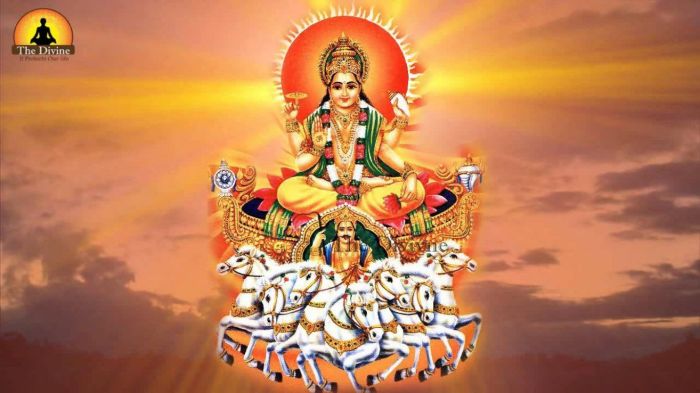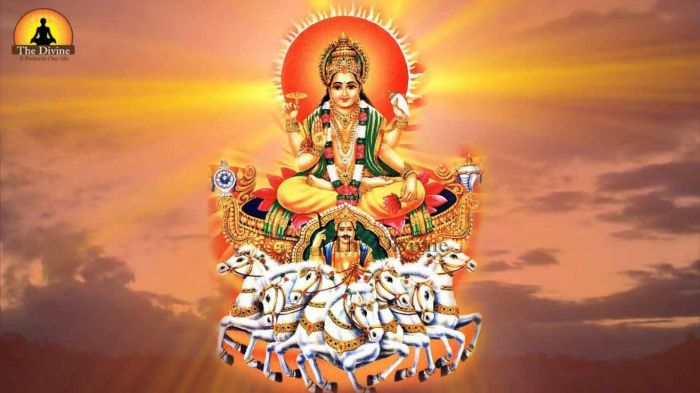Use a Binding Spell delves into the fascinating world of magical practices, exploring the intricacies of binding spells. From understanding their historical roots and diverse interpretations to mastering the rituals and ethical considerations, this guide provides a comprehensive overview for those interested in learning more about this powerful practice. We’ll uncover the common components, casting procedures, and potential risks involved.
This exploration into binding spells will guide you through the essential elements of crafting, casting, and understanding these spells. We’ll cover everything from defining the various types of binding spells to examining the symbolism behind ingredients and rituals.
Defining Binding Spells
Binding spells, a captivating yet often misunderstood practice, encompass a broad spectrum of rituals and incantations aimed at influencing the course of events or altering the nature of relationships. Their interpretations vary significantly across cultures and historical periods, ranging from the practical to the deeply symbolic. From ancient folklore to modern interpretations, these spells have captivated imaginations and sparked both fascination and skepticism.The concept of binding, in its various forms, has existed in many cultures for millennia.
These spells, often passed down through generations, aim to create a connection between the practitioner and the target, whether it be a person, object, or emotion. This connection, achieved through ritualistic practices, is intended to control or manipulate the target in a predetermined way.
Historical and Mythical Origins
The roots of binding spells are intertwined with ancient traditions, folklore, and mythology. In many cultures, these spells were used to appease deities, ward off evil, or influence the natural world. For example, ancient Mesopotamian texts reveal the use of incantations to bind demons and spirits. Similarly, in many European traditions, binding spells were used to control nature or to ensure good fortune.
These practices highlight the profound connection between humans and the supernatural that has shaped belief systems throughout history.
Different Types of Binding Spells
Binding spells manifest in diverse forms, each tailored to specific targets and desired outcomes. These spells can be categorized based on their target, ranging from tangible objects to abstract concepts.
| Spell Type | Target | General Effect |
|---|---|---|
| Love Binding | Person | Increase affection and commitment between individuals. |
| Protection Binding | Person/Object | Create a protective barrier against harm or negative influences. |
| Illusion Binding | Person/Emotion | Create a compelling illusion or mental state, potentially manipulating perception. |
| Binding of Actions | Person/Actions | Influence a person’s behavior or choices. |
| Object Binding | Object | Enhance or control the properties of an object, such as increasing its potency or altering its function. |
Detailed Examples of Binding Spells
Love binding spells, for instance, often involve rituals focused on strengthening the emotional connection between two people. Protection binding spells, on the other hand, may employ symbols and rituals to create a protective shield around the target. Each type of binding spell requires specific ingredients, materials, and procedures, making them deeply rooted in tradition and cultural context. These rituals vary widely in their complexity, from simple incantations to elaborate ceremonies involving multiple steps and ingredients.
Components and Ingredients
Binding spells, like any spell, rely heavily on the symbolic power of chosen ingredients. These components aren’t simply tossed in; each item holds a specific meaning that amplifies the spell’s intent and strengthens the connection between the caster and the desired outcome. Careful selection and preparation of ingredients are vital to ensure the spell resonates with the intended energy and achieves its purpose.The selection of components for binding spells isn’t arbitrary; they represent different aspects of the desired outcome.
Whether it’s a binding spell to solidify a relationship or control a troublesome habit, the ingredients chosen must align with the intended energy. This alignment allows the spell to work effectively, harnessing the inherent power of each item.
Common Components and Symbolic Meanings
Binding spells often employ a variety of components, each carrying symbolic weight. Understanding these meanings is crucial for effective spellcasting. Candles, for instance, symbolize light, focus, and intention. Flowers represent beauty, emotion, and life force. Other common ingredients, like herbs, gemstones, and metals, each hold unique symbolic power.
Importance of Specific Ingredients in Different Spell Types
The specific ingredients chosen for a binding spell often depend on the nature of the binding. A spell designed to bind a person to a particular commitment might use components that represent loyalty and stability. Conversely, a spell aimed at binding a negative habit might include ingredients associated with restriction or transformation. For instance, if the goal is to bind a person’s destructive habits, ingredients associated with self-control and moderation would be chosen.
Crafting and Preparing Ingredients
The act of crafting or preparing ingredients plays a significant role in binding spells. This process allows the caster to infuse the components with intention and personal energy. Preparing ingredients like herbs by drying or crushing them, or crafting candles with specific affirmations, imbues the spell with a deeper layer of meaning and personal connection. This preparation phase isn’t just about the physical act; it’s a crucial step in the spell’s overall power.
Using a binding spell can be a powerful tool, but it’s crucial to understand its potential implications. It’s a bit like summoning a force, but with the added layer of control. This careful manipulation, similar to the delicate maneuvers of the “soft cavalry the soft cavalry” the soft cavalry the soft cavalry , requires a deep understanding of the target and the desired outcome.
Ultimately, a binding spell needs careful consideration to achieve the intended effect, not unlike a well-practiced magic user.
Example Table of Ingredients and Symbolic Representations
| Ingredient | Symbolic Representation |
|---|---|
| Candles | Light, focus, intention |
| Flowers | Beauty, emotion, life force |
| Salt | Protection, purification, banishing |
| Water | Purification, cleansing, emotional balance |
| Earth | Stability, grounding, connection to the physical world |
| Incense | Spiritual connection, focus, purification |
Casting Procedures

Binding spells, like any magical act, require careful preparation and execution. The process transcends simple recitation; it involves a conscious alignment with the desired outcome, a meticulous selection of components, and a precise method of delivery. Understanding the nuances of various traditions is crucial for achieving the intended effect. This section delves into the practical aspects of casting binding spells, exploring common steps, diverse methods, and illustrative examples.
Common Steps in Casting Binding Spells
The core steps in most binding spellcasting traditions share commonalities, emphasizing intention, visualization, and ritualistic action. These steps are not rigid rules, but rather guidelines for the practitioner to personalize and adapt based on their chosen tradition and specific needs. A critical element is the meticulous preparation of the spell components, a process that often includes considerations for timing and location.
Ever considered using a binding spell? It’s a powerful tool, but it’s crucial to approach such practices with caution and understanding. For instance, exploring the complexities of love and relationships, like in 6lack’s East Atlanta love letter 6lack east atlanta love letter , can offer valuable insights. Ultimately, understanding the potential consequences is key when considering any binding spell.
- Preparation and Intention Setting: Begin with a clear intention. Define the target and the desired outcome with unwavering focus. This stage is pivotal, as the intent shapes the spell’s efficacy. Visualize the desired outcome vividly and hold the image in your mind. This strong mental picture reinforces the spell’s power.
- Component Arrangement: Arrange the components in a symbolic pattern, often reflecting the nature of the binding. This could involve specific layouts, color schemes, or materials carefully chosen for their magical properties. The precise arrangement is a significant factor in some traditions.
- Recitation of Incantations: The incantation, or spoken words, is an essential part of many binding spells. These words are often carefully chosen for their power and resonance. The practitioner should pronounce the words with clarity and conviction, ensuring they resonate with the intent.
- Ritualistic Actions: Certain actions, like lighting candles, drawing circles, or performing specific gestures, accompany the incantations. These actions are often symbolic, representing the process of binding and the intended outcome.
- Visualization and Affirmation: Visualize the binding taking effect, reinforcing the desired outcome through mental imagery and affirmations. This step reinforces the connection between the spellcaster and the target.
- Closing Ritual: The closing ritual marks the completion of the spell. This could involve extinguishing candles, dismissing the ritual space, or other symbolic actions to seal the spell’s energy.
Different Casting Methods Across Traditions
Various magical traditions employ diverse casting methods. The approach may differ in the emphasis on visualization, the use of specific gestures, and the selection of components. Some traditions emphasize the use of specific sigils or talismans, while others focus on the energy exchange between the caster and the target.
- Coven Tradition: Coven traditions often involve group rituals, with a structured hierarchy and emphasis on collective energy. The spellcasting process is typically elaborate and follows prescribed steps. Symbols and gestures are integral to the coven’s practice.
- Solitary Practice: Solitary spellcasters often tailor their methods to their individual needs and understanding of the spell’s workings. Visualization and mental imagery play a critical role in solitary practices. Emphasis is on personal connection and intent.
- Hermetic Tradition: The hermetic tradition frequently utilizes specific geometric patterns and symbolic correspondences. These patterns are often visually represented and play a key role in the spell’s execution. Emphasis is on the alignment with natural forces and cosmic energies.
Examples of Binding Rituals and Symbolism
Binding spells frequently incorporate symbolic actions and imagery. For example, the use of fire might represent the destruction of old patterns or the burning away of resistance. Water might symbolize the cleansing and purification of the binding process.
Using a binding spell can be a powerful tool, but it’s crucial to consider the implications. Like choosing a new name when undergoing a significant life change, a binding spell should be approached with intention and careful consideration. Think about Choose a Name when Changing It – a new name represents a new identity, and a binding spell similarly seeks to establish a strong connection or influence.
Ultimately, using a binding spell requires a profound understanding of its potential effects and a commitment to using it responsibly.
- Binding a negative emotion: A ritual might involve burning a candle representing the emotion, while reciting words of release and transformation. The act of burning symbolizes the destruction of the negative emotion.
- Binding a contract: A binding spell to solidify an agreement might involve drawing a circle on a piece of parchment, using specific herbs, and reciting a binding formula. The circle represents containment and protection, while the herbs symbolize the commitment and integrity of the agreement.
Casting Procedure Flowchart
[A flowchart illustrating the typical procedure for a binding spell could be presented here. It would visually depict the steps discussed above, showcasing their sequence and interrelation. However, I cannot create images/flowcharts within this text-based format.]
Rituals and Practices: Use A Binding Spell
Rituals and practices are integral to binding spells, acting as frameworks for focusing intention and channeling energy. They create a sacred space and a structured approach to the spell’s execution, ensuring the spell’s potency and alignment with the desired outcome. Beyond the practical aspects, rituals often hold symbolic meaning and cultural significance, connecting the caster to their traditions and beliefs.Rituals, in essence, are more than mere steps; they are carefully crafted pathways to achieve the desired outcome of the binding spell.
The specific components of a ritual, from the chosen location to the spoken words, contribute to the spell’s efficacy and resonate with the deeper intent behind the binding.
Significance of Rituals in Binding Spells
Rituals imbue binding spells with a heightened sense of purpose and intention. They establish a clear framework, guiding the caster through the process and focusing their energy. This structured approach enhances the spell’s effectiveness by aligning the caster’s energy with the desired outcome. The precise sequence of actions and the symbolic meaning of each step reinforce the spell’s power.
Importance of Specific Rituals in Different Spell Types
Different types of binding spells often necessitate specific rituals tailored to their unique nature. For example, a spell designed to bind a negative energy might involve rituals focusing on cleansing and protection, while a spell intended to bind a person to a certain action might incorporate rituals emphasizing commitment and responsibility. Understanding the nuances of the specific spell type dictates the selection and execution of appropriate rituals.
Examples of Rituals Associated with Binding Spells
Many cultures employ specific rituals associated with binding spells. In some traditions, a ritual might involve the lighting of candles of specific colors, each representing a different aspect of the binding. Other traditions may incorporate the use of herbs and incense, each with its symbolic meaning. The use of specific symbols and talismans is also common, each with its associated significance and history.
Common Rituals Used in Various Traditions, Use a Binding Spell
- Purification Rituals: These rituals cleanse the caster and the space, preparing them for the binding spell. Purification rituals can involve smudging with incense, water purification ceremonies, or the use of herbs with cleansing properties. The aim is to remove any negative energy or interference before commencing the spell.
- Invocation Rituals: These rituals are aimed at invoking the desired power or entities to support the binding. They often involve specific chants, prayers, or invocations to align the spell with the forces of the universe. Specific gestures, postures, or hand movements may also be used to further enhance the ritual.
- Meditation and Visualization Rituals: These rituals focus on the caster’s mental state, allowing them to visualize the binding taking place and focus their intent. Meditation and visualization techniques are frequently used to enhance the spell’s power and ensure alignment with the desired outcome. The specific visualizations and affirmations are crucial for success.
Environment and Atmosphere in Casting Binding Spells
The environment and atmosphere play a significant role in the success of binding spells. Creating a dedicated space, free from distractions and negative influences, is crucial. The ambiance should be conducive to focus and intention, potentially incorporating candles, incense, and music. The chosen environment should enhance the spell’s effectiveness and promote a sense of sacredness. A peaceful, calm, and focused environment is often ideal for casting binding spells.
Ethical Considerations
Binding spells, while potentially powerful tools, carry significant ethical responsibilities. Their application requires careful consideration of potential consequences and a profound understanding of the delicate balance between intent and impact. Practitioners must approach these spells with a commitment to ethical conduct, prioritizing the well-being and autonomy of those involved.The inherent power of binding spells demands a cautious and responsible approach.
Ethical considerations are not merely optional add-ons but foundational principles that guide the responsible use of such potent energies. Neglecting these considerations can lead to unintended harm and suffering, violating the principles of respect, consent, and well-being.
Potential Risks and Consequences
Binding spells, if misused or performed without a deep understanding of their effects, can lead to a range of negative consequences. The potential for unintended repercussions highlights the crucial importance of meticulous preparation and a thorough understanding of the spell’s mechanics.
- Unforeseen Side Effects: Spells can have unforeseen side effects, both on the target and the caster. The energies involved are complex and unpredictable, and a lack of understanding can lead to undesirable outcomes. For example, a poorly-constructed spell intended to compel a person to act a certain way might instead cause anxiety, depression, or other emotional distress.
- Violation of Autonomy: A core ethical principle involves respecting the autonomy of the individual being targeted. Coercing someone through binding spells, even with seemingly positive intentions, can be a violation of their free will and personal agency. This can cause long-term damage to the target’s mental and emotional well-being.
- Unintended Harm to Others: The impact of a binding spell isn’t always limited to the intended target. It can inadvertently affect others connected to them, causing ripple effects that are difficult to predict and control. For instance, a spell meant to bind a spouse might inadvertently strain or damage relationships with family members.
Importance of Consent and Respect
Respect for the individual and their autonomy is paramount. Any practice involving binding spells must prioritize consent and respect. Targeting an individual without their informed consent is a fundamental ethical breach and can have severe consequences.
- Informed Consent: The target must be fully aware of the nature, purpose, and potential risks associated with the binding spell. They should be given the opportunity to ask questions and understand the implications of the spell on their life and well-being.
- Voluntary Participation: The target’s participation in the spell must be entirely voluntary. Coercion or manipulation in any form is strictly prohibited. It is crucial that the target understands the power of their choice and that their consent is unequivocal.
- Open Communication: Honest and open communication is essential. The caster must maintain an environment where the target feels safe to express their concerns, anxieties, or doubts. A clear understanding of expectations and boundaries should be established and maintained.
Ethical Considerations in Practice
The ethical considerations involved in binding spells extend beyond the act of casting. They encompass the entire process, from preparation to execution to any potential aftermath.
- Self-Reflection: The practitioner should engage in rigorous self-reflection before, during, and after casting a binding spell. Assessing one’s motives and intentions is crucial to ensure the spell is being used ethically.
- Alternative Solutions: Consider if alternative solutions are available. Explore avenues such as therapy, mediation, or communication before resorting to binding spells. These alternative approaches can often address the underlying issues without the potential for harmful consequences.
- Responsibility for Consequences: The caster assumes responsibility for the potential consequences of the spell. They must be prepared to address any negative outcomes that arise from the spell’s application.
Examples of Binding Spells

Binding spells, a powerful tool in various magical traditions, aim to influence and control situations, people, or energies. They function by creating a powerful link between the caster and the target, shaping the outcome according to the spell’s intent. Understanding the different types of binding spells and their applications is crucial for responsible and effective practice.
Binding Spells for Specific Situations
Various situations require different approaches to binding spells. These spells often employ symbolic representations of the desired outcome, weaving them into the ritual’s structure. The choice of ingredients, chants, and visualizations are meticulously selected to align with the spell’s purpose.
| Spell Type | Description | Procedure |
|---|---|---|
| Binding a Negative Event | Stopping a negative event from unfolding, such as a conflict or a mishap. | The spell utilizes herbs associated with protection and grounding, such as mugwort and vervain. A specific chant focusing on stopping the negative energy is recited, while visualizing the event dissolving or redirecting. |
| Binding a Person’s Behavior | Influencing a person’s actions to align with a desired outcome, without coercion. | This spell involves objects representing the desired behavior, combined with herbs associated with willpower and guidance. The ritual might involve writing down intentions and visualizing the desired changes. Emphasis is placed on ethical considerations, ensuring the spell does not infringe on free will. |
| Binding a Situation to a Specific Outcome | Ensuring a specific outcome for a situation, like a negotiation or a business deal. | This spell incorporates elements representing success and prosperity, such as coins or gemstones. A ritual focusing on manifestation and intention setting is performed, while visualizing the desired outcome coming to fruition. |
| Binding a Relationship | Strengthening a relationship or creating a deeper connection between individuals. | The spell uses herbs associated with love and harmony, such as rose petals and chamomile. The ritual involves chanting words of affirmation and unity, while visualizing the relationship blossoming into a stronger bond. |
Symbolism and Purpose in Binding Spells
Each element within a binding spell carries symbolic weight. Herbs, crystals, and even the chosen location of the ritual contribute to the spell’s overall effect. For instance, using rosemary in a binding spell for a business deal signifies remembrance and perseverance. The visualization process focuses on creating a mental image of the desired outcome, making it tangible and reinforcing the spell’s intent.
The chants and affirmations are powerful tools, using resonant sounds to amplify the energy of the ritual.
Different Approaches to Binding Spells
Binding spells can be approached in various ways, each with its own unique focus. Some spells focus on directly influencing the outcome, while others aim to redirect energy or influence external factors. For example, a spell binding a negative event might involve redirecting the negative energy away from the target, while a spell binding a person’s behavior might involve guiding them towards the desired actions.
These approaches reflect the complexity and diversity of magical practices.
Closure
In conclusion, understanding and practicing binding spells involves a deep dive into various traditions, ingredients, and ethical considerations. This exploration into the power and symbolism of binding spells highlights the potential for both profound impact and potential harm. Remember to approach this practice with respect, caution, and a mindful understanding of the energy involved.




